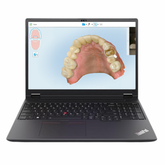連接軟件和硬件以改善分佈式架構中的資產管理
如今,大多數公司都依賴運算能力來維持日常營運。無論員工使用桌上型電腦、筆記型電腦、平板電腦或手機,公司都需要多種設備才能讓員工連接到企業系統。在某些應用中,依賴所有這些不同的設備和系統可能會造成資產管理上的麻煩。在分散式架構中,這種情況尤其突出。
如何區分分散式架構應用?這類應用需要作為一個完整的系統進行協作,同時也要涵蓋多個設施或建築物以及各種異質設備。此外,在某些此類應用中,企業系統和軟體的存取點位於實體設施之外或受限空間內。分散式架構的一些例子包括醫院、學校、零售商店、超市、倉庫和車隊。
這些應用為資產管理帶來了一些挑戰,尤其是在硬體設備方面。在本部落格中,我們將探討其中一些挑戰,以及當貴公司使用搭載 Android 系統的硬體設備時如何應對這些挑戰。如果您想了解 Android 是否是您的應用程式的最佳作業系統, 閱讀這篇博客。
遠端管理和成本降低
當一家公司在多個州擁有多家門市時,幾乎不可能將所有設備集中到一個IT部門進行應用程式更新或軟體故障排除。或者,在每家店都配備一名IT人員成本也很高。為了節省成本,您需要在裝置上安裝DevOps解決方案,以協助您追蹤、管理、故障排除和監控所有企業硬體設備。無論設備位於何處,該解決方案都將成為您IT團隊即時監控和解決問題的關鍵。該平台能夠將日常營運所需的所有企業應用程式與硬體設備連接起來。
保證設備的預期用途
在某些應用場景中,例如學校或車隊,公司依賴現場工作人員,但對設備的預期用途缺乏監督。安裝額外的個人應用程式可能會危及公司安全,並帶來其他後果,例如消耗設備資源。而在其他應用場景中,例如自助服務終端或銷售點系統,公司則希望透過精確配置硬體並僅安裝必要的應用程式來確保資源的高效利用。
因此,您需要確保現場安裝的所有硬體都是專用設備。專用設備是公司擁有的、僅用於單一用途的設備。您可以閱讀更多關於專用設備的資訊。 這篇博文 如果貴公司需要專用設備,DevOps 解決方案可以限制硬體設備的使用,以確保其用途符合預期。這意味著用戶或員工只能使用裝置上已安裝的應用程序,並且無法安裝任何未經授權的軟體。
利用雲端技術確保資料完整性
真正發揮邊緣運算的優勢。透過合理配置硬體並選擇合適的作業系統,您可以在雲端共用、儲存和檢查資料。避免將所有資料儲存在本地,可以更好地應對停機帶來的負面影響。 DevOps 解決方案與雲端解決方案相結合,能夠顯著提升生產力,因為您可以遠端或本地處理數據,並快速將其儲存在集中位置。這也能讓您更精準地控制日常運營,並能夠同時收集足夠的數據,以便在多個設施中採取糾正措施。
客製化
在分散式架構中,使用者有時會利用遠端單點存取企業系統。您需要抓住一切機會來強化品牌認知。透過軟硬體的協同合作,您可以確保所有客製化功能都旨在幫助您在員工和消費者中提升品牌知名度。 DevOps 解決方案和硬體製造商可以幫助您將品牌自然地融入設備和軟體中。
支援同一平台上的不同硬體設備
由於分散式架構是異質系統,您的公司很可能需要使用不同的行動硬體設備。如何才能減少這些麻煩呢?除了選擇像 Android 這樣的作業系統之外,您還應該找到一個能夠支援所有這些不同裝置的 DevOps 平台,從而實現硬體和軟體的橋接。這將幫助您的公司應對之前提到的所有挑戰。
如果您想繼續閱讀有關分散式架構的內容,請 閱讀此頁面 如果您想了解更多關於專用設備的 Android DevOps 解決方案,請訪問 www.esper.io。



